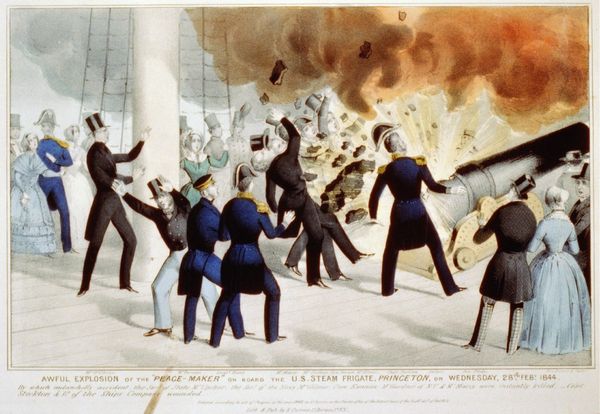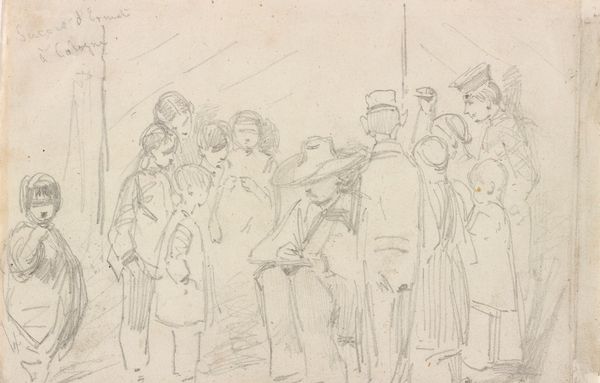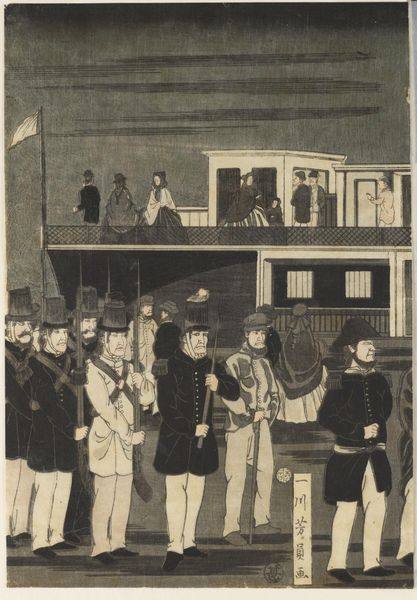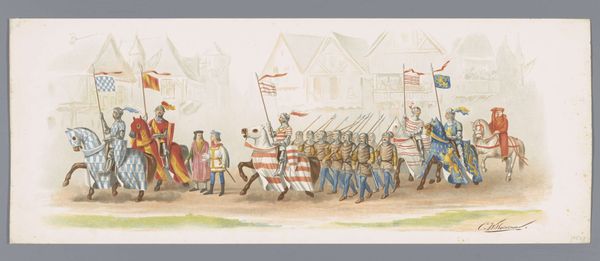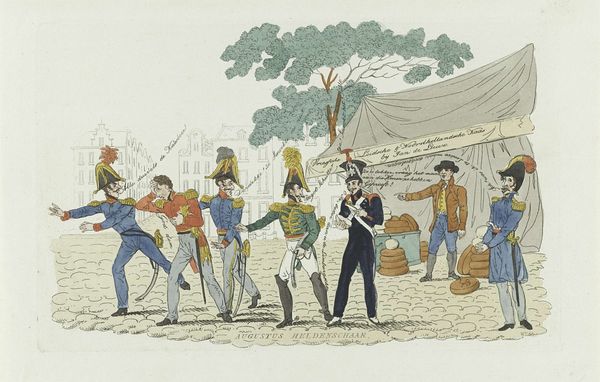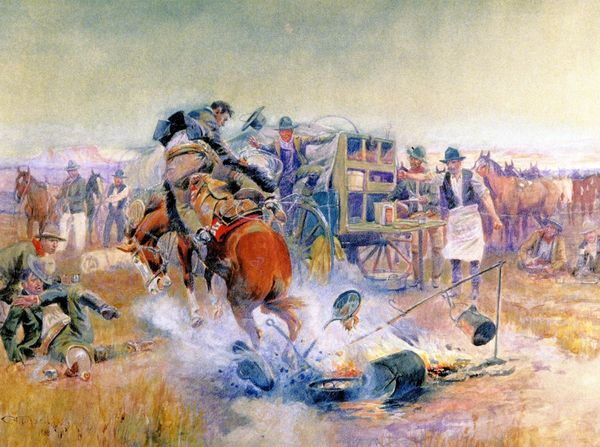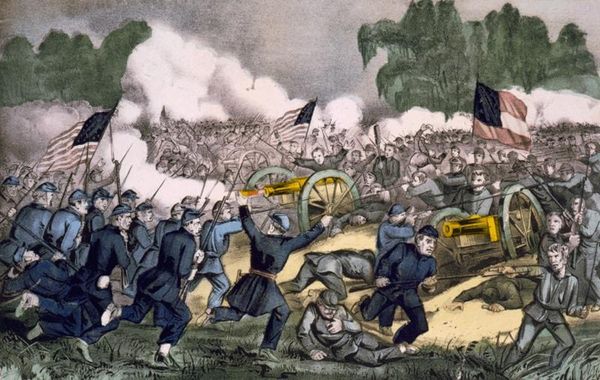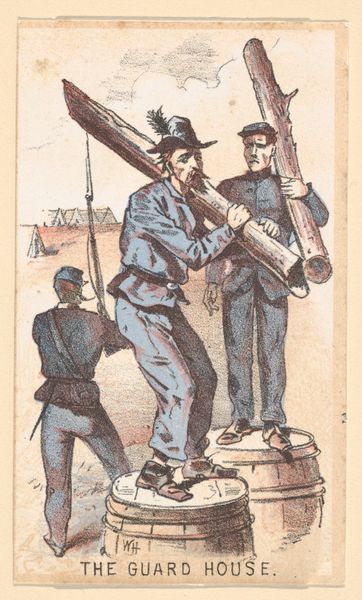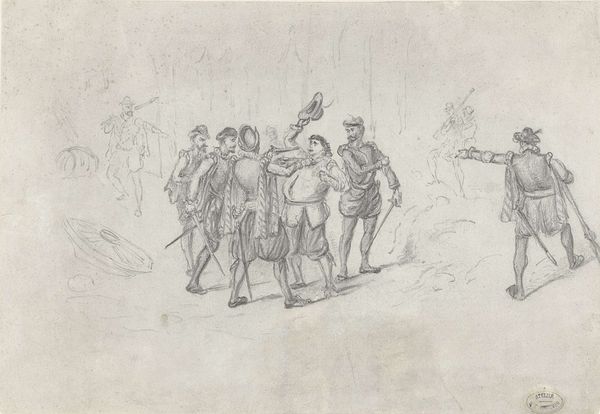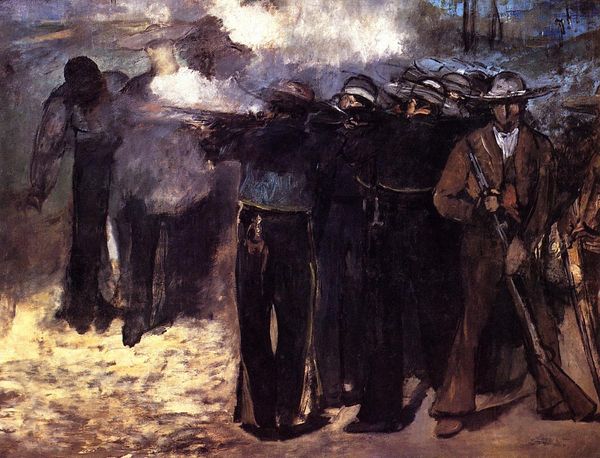
The Execution of the Emperor Maximilian of Mexico 1868
0:00
0:00
edouardmanet
Clark Art Institute, Williamstown, MA, US
Dimensions: 33.5 x 43.5 cm
Copyright: Public domain
Édouard Manet created "The Execution of the Emperor Maximilian of Mexico" using oil on canvas. The stark composition immediately draws us in with its brutal depiction of execution. Manet’s brushwork is loose, almost journalistic, focusing on capturing the moment rather than classical detail. The firing squad, clad in blue uniforms, stands in sharp contrast to the pale, almost luminous figures of Maximilian and his companions. The wall acts as a harsh barrier, dividing the executioners from the onlookers peering from above. The painting critiques power and political violence of its time. Manet destabilizes the traditional heroic narrative often associated with historical paintings. The detached gaze of the executioners and the smoke that obscures their faces serves to depersonalize them. Through its formal elements, the painting prompts a re-evaluation of what constitutes historical art. It challenges fixed meanings, inviting us to reflect on the unsettling realities of power and the fragility of human life. The muted tones and detached composition amplify the sense of alienation, turning a historical event into a stark commentary on modern existence.
Comments
artera over 1 year ago
⋮
In January 1866, three years after having persuaded the Hapsburg Archduke Maximilian to accept the Mexican throne, Napoleon Ill decided to withdraw the French troops from Mexico, leaving Maximilian totally defenseless. The guerillas led by Benito Juárez captured and executed Maximilian soon after. Drawing inspiration from Goya's The Third of May 1808 (1814) and contemporary pictorial reportage, Edouard Manet (1832-83) painted The Execution of Maximilian in 1867-68. That same year the French writer Emile Zola published a biographic and critical study of Manet's work. The French writer defended Manet's art, which was rejected by the academics. The Execution of Maximilian is the definitive canvas of four other studies on the same theme produced by Manet. Several qualities made Manet a modern artist, such as the typically rough painterly style, and the careful attention to the surface of the picture plane. This work was first shown to the public in 1879 in New York, as Manet could not exhibit this painting in France because it was considered to be politically incorrect by the imperial regime of the time.
Join the conversation
Join millions of artists and users on Artera today and experience the ultimate creative platform.


